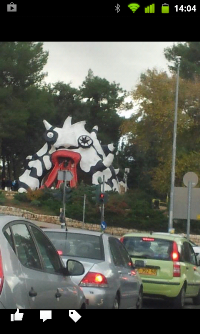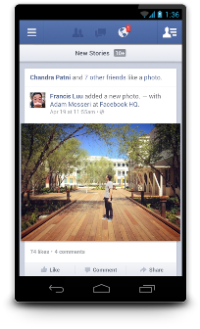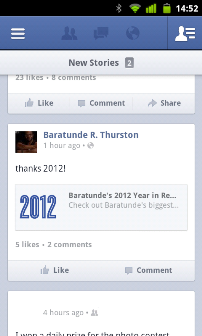Four months after Facebook released a native app for iOS, a corresponding Android version is available. The app, written with native code (instead of HTML 5) that the company says is twice as fast as the previous app, has no significant new features other than faster response times for viewing and scrolling through your news feed, photos, and Timeline.
In my brief time with the app on a Nexus One running a flavor of Android 2.3 Gingerbread, I found the app definitely loads faster than the previous version. Twice the speed is a bit of an exaggeration, but the speed improvement is noticeable.

Unlike the previous version, Facebook for Android 2.0 won't automatically update your viewing window, causing you to lose your place. It's annoying to open Facebook to an interesting post, start reading, and find yourself displaced when the app suddenly jumps to the top of the news feed with new content. No more. Instead, Facebook for Android alerts you to new posts at the top of the screen, but the app itself doesn't budge from its place in the news feed.

However, even though Facebook's Android and iOS apps both now use native code, the company hasn't abandoned HTML 5. Zuckerberg noted in the same interview that Facebook's mobile Web sites, such as touch.facebook.com, have a higher user rate than Facebook's mobile apps.
Facebook also recently released an update to its iOS app including more speed improvements and the ability to upload photos to a specific album on Facebook.
Sign up here with your email

ConversionConversion EmoticonEmoticon